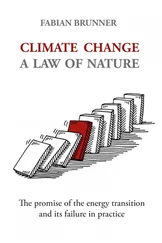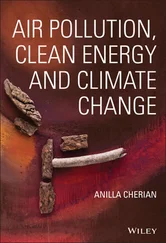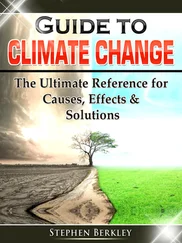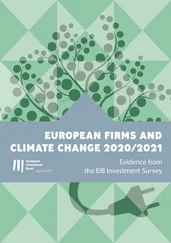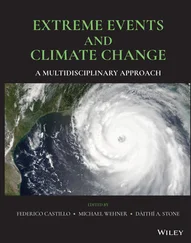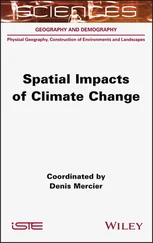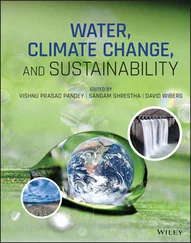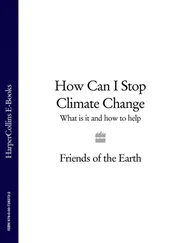The most complex climate models, such as those used at NASA, look at the Earth in three dimensions. The scientists divide the atmosphere and oceans into square columns for input to the computer models. Each of these columns has its own set of weather information based on the history and current status of the area. This information gives the computer a base to work from. Then, the researcher running the model changes the numbers to see what would happen if one condition changed, such as air temperature. For short-term projections (looking forward a day to a month), an advanced computer can make the calculation in 20 minutes. But making longer-term projections (such as 50 years from now) can take a month or two. A global circulation climate model can take as long as a year to produce results after researchers input all the variables.
Three or four degrees F seems like a small number to make a big deal about. You may even be thinking that an extra 3.6 degrees F (2 degrees C) seems like a perfect amount of global warming. Your garden would grow better, you’d be hitting the beach more often, and the golf season might be longer, right? But 3.6 degrees F (2 degrees C) is actually a lot. The IPCC reports that the global average temperature in the middle of the last ice age was only 10 degrees F (5.5 degrees C) colder than it is today.
 This increase of 3.6 degrees F refers to the average global temperature, but average numbers hide the extremes on either end. For example, you can dive into a pool that has an average depth of 1 foot (30 centimeters) if it’s 10 feet (3 meters) at the deep end. Right now, the average global temperature is 60 degrees F (15.6 degrees C). Of course, temperatures can be much colder than that in the winter and way warmer in the summer. In that same 60-degree Fahrenheit (15.6-degree Celsius) global average, you can go skiing in the Alps or swimming in the Caribbean.
This increase of 3.6 degrees F refers to the average global temperature, but average numbers hide the extremes on either end. For example, you can dive into a pool that has an average depth of 1 foot (30 centimeters) if it’s 10 feet (3 meters) at the deep end. Right now, the average global temperature is 60 degrees F (15.6 degrees C). Of course, temperatures can be much colder than that in the winter and way warmer in the summer. In that same 60-degree Fahrenheit (15.6-degree Celsius) global average, you can go skiing in the Alps or swimming in the Caribbean.
Going, going, gone … The tipping point
The tipping point is the point at which something has gone too far — or past the point of no return. Think of slowly going up the first climb on a roller coaster. After you go over the top, no one can stop the ride.
 Scientists believe that climate change has a tipping point, when the damage becomes too great to be reversed. After this point, not only can nothing reverse the impact on the planet, but little could stop that impact from increasing, either — it just keeps getting worse.
Scientists believe that climate change has a tipping point, when the damage becomes too great to be reversed. After this point, not only can nothing reverse the impact on the planet, but little could stop that impact from increasing, either — it just keeps getting worse.
Scientists figured out, for example, how hot the climate would need to become to melt the entire world’s ice sheets — this melt would cause sea levels to rise, which would flood coastal cities around the world. At the same time, the scientists figured out the amount of GHGs needed to reach these temperatures.
By looking at these different possibilities, scientists can tell which effects of climate change humans can deal with and which ones are beyond humanity’s ability to adapt to or control.
 In Global Warming For Dummies, we said that that IPCC had defined an average global temperature rise of about 3.6 degrees F (2 degrees C) above 1850 levels as the official climate change warning zone. But scientists know now that that temperature increase is above the point of no return, or the tipping point. In 2018, in the IPCC’s Special Report on 1.5 Degrees, it found that even holding to 1.5 degrees is no guarantee of a safe climate. If the temperature goes to 5.4 degrees F (3 degrees C), then 7.2 degrees F (4 degrees C) becomes inevitable. At 7.2 degrees F (4 degrees C), then 9 degrees F (5 degrees C) becomes inevitable. And so on. The increases soon outstrip any human ability to slow or control those increases. The increased warming becomes inevitable because of positive feedback loops (see Chapter 7for the lowdown on feedback loops). Thawing permafrost (the frozen ground in the Arctic) releases methane, speeding more warming. Melting icecaps reveal more open water, which is darker than snow and absorbs rather than reflects the heat of the sun, speeding warmer ocean temperatures and more ice melt. Dryer conditions lead to more forest fires, releasing more carbon and causing more warming. This domino effect can lead to an unlivable world.
In Global Warming For Dummies, we said that that IPCC had defined an average global temperature rise of about 3.6 degrees F (2 degrees C) above 1850 levels as the official climate change warning zone. But scientists know now that that temperature increase is above the point of no return, or the tipping point. In 2018, in the IPCC’s Special Report on 1.5 Degrees, it found that even holding to 1.5 degrees is no guarantee of a safe climate. If the temperature goes to 5.4 degrees F (3 degrees C), then 7.2 degrees F (4 degrees C) becomes inevitable. At 7.2 degrees F (4 degrees C), then 9 degrees F (5 degrees C) becomes inevitable. And so on. The increases soon outstrip any human ability to slow or control those increases. The increased warming becomes inevitable because of positive feedback loops (see Chapter 7for the lowdown on feedback loops). Thawing permafrost (the frozen ground in the Arctic) releases methane, speeding more warming. Melting icecaps reveal more open water, which is darker than snow and absorbs rather than reflects the heat of the sun, speeding warmer ocean temperatures and more ice melt. Dryer conditions lead to more forest fires, releasing more carbon and causing more warming. This domino effect can lead to an unlivable world.
 No one knows exactly where that tipping point for global warming is. Scientists know only that humanity has a chance to avoid it by holding to 1.5 degrees C. The IPCC says that the average global temperature will rise by 3.6 degrees F (2 degrees C) when total carbon dioxide levels reach 425 to 450 ppm. The trouble is, it’s moving upward at 2 ppm per year and is currently at about 412 ppm of carbon dioxide as we write this.
No one knows exactly where that tipping point for global warming is. Scientists know only that humanity has a chance to avoid it by holding to 1.5 degrees C. The IPCC says that the average global temperature will rise by 3.6 degrees F (2 degrees C) when total carbon dioxide levels reach 425 to 450 ppm. The trouble is, it’s moving upward at 2 ppm per year and is currently at about 412 ppm of carbon dioxide as we write this.
Uncertainty always exists when it comes to making predictions. The IPCC has found that “The scale of recent changes across the climate system as a whole and the present state of many aspects of the climate system are unprecedented over many centuries to many thousands of years.” The principles in the original 1992 treaty, the UNFCCC, called for action even if uncertainty remained: It’s better to be safe than sorry. The United Nations calls this philosophy the precautionary principle. Unfortunately, governments didn’t exercise the “precautionary” actions. That’s why the Earth is already in a danger zone.
Eyeballing the Consequences of Continued Carbon Dioxide Increases
If scientists are right about the connection between carbon dioxide and climate change, then what comes next? The past is all very interesting, but it’s history. What the future holds concerns all of humanity — and the predictions that scientists have for the future are alarming.
As the ice cores demonstrate, carbon dioxide levels have always fluctuated (check out the section, “ Making the Case for Carbon” earlier in the chapter for more information), but the atmosphere now has 35 percent more carbon dioxide than at any time in the last 800,000 years. Historically, carbon dioxide has reached highs of 280 ppm at a maximum. The atmosphere is now at 412 ppm.
This increase in carbon dioxide is an extraordinary shift. If present trends continue, the Earth’s average temperature is likely to be 3.6 to 10.8 degrees F (2 to 6 degrees C) above 1850 temperatures — and that temperature increase could be disastrous for all life on Earth. The Earth’s temperature has already risen approximately 1.4 degrees F (1.11 degrees C). You find more about what a rise of 1.5 degree or 2 degrees C would mean in Chapters 10and 17.
WHY SCIENTISTS COMPARE TEMPERATURES TO THE YEAR 1850
The international scientific community uses the temperatures at the time just before the Industrial Revolution (1850) as a baseline. They do so because human contributions to climate change weren’t significant before that time. By measuring the buildup of GHGs and temperatures compared to what they were before the Industrial Revolution, they’re measuring the impact that is largely attributable to human activity.
What happens when the mercury rises
In 2009, the earlier version of this book Global Warming for Dummies talked about the need to keep the world’s average temperature below 3.6 degrees F (2 degrees C). That goal is now understood to be more dangerous than was originally thought. Scientists now confirm that the humanity should strive for no more than 1.5 degrees C or anticipate the following:
Читать дальше
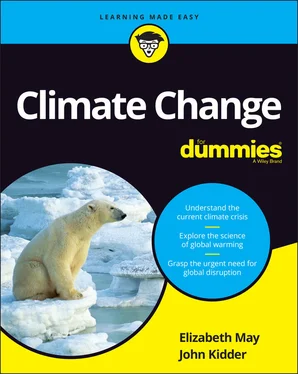
 This increase of 3.6 degrees F refers to the average global temperature, but average numbers hide the extremes on either end. For example, you can dive into a pool that has an average depth of 1 foot (30 centimeters) if it’s 10 feet (3 meters) at the deep end. Right now, the average global temperature is 60 degrees F (15.6 degrees C). Of course, temperatures can be much colder than that in the winter and way warmer in the summer. In that same 60-degree Fahrenheit (15.6-degree Celsius) global average, you can go skiing in the Alps or swimming in the Caribbean.
This increase of 3.6 degrees F refers to the average global temperature, but average numbers hide the extremes on either end. For example, you can dive into a pool that has an average depth of 1 foot (30 centimeters) if it’s 10 feet (3 meters) at the deep end. Right now, the average global temperature is 60 degrees F (15.6 degrees C). Of course, temperatures can be much colder than that in the winter and way warmer in the summer. In that same 60-degree Fahrenheit (15.6-degree Celsius) global average, you can go skiing in the Alps or swimming in the Caribbean. In Global Warming For Dummies, we said that that IPCC had defined an average global temperature rise of about 3.6 degrees F (2 degrees C) above 1850 levels as the official climate change warning zone. But scientists know now that that temperature increase is above the point of no return, or the tipping point. In 2018, in the IPCC’s Special Report on 1.5 Degrees, it found that even holding to 1.5 degrees is no guarantee of a safe climate. If the temperature goes to 5.4 degrees F (3 degrees C), then 7.2 degrees F (4 degrees C) becomes inevitable. At 7.2 degrees F (4 degrees C), then 9 degrees F (5 degrees C) becomes inevitable. And so on. The increases soon outstrip any human ability to slow or control those increases. The increased warming becomes inevitable because of positive feedback loops (see Chapter 7for the lowdown on feedback loops). Thawing permafrost (the frozen ground in the Arctic) releases methane, speeding more warming. Melting icecaps reveal more open water, which is darker than snow and absorbs rather than reflects the heat of the sun, speeding warmer ocean temperatures and more ice melt. Dryer conditions lead to more forest fires, releasing more carbon and causing more warming. This domino effect can lead to an unlivable world.
In Global Warming For Dummies, we said that that IPCC had defined an average global temperature rise of about 3.6 degrees F (2 degrees C) above 1850 levels as the official climate change warning zone. But scientists know now that that temperature increase is above the point of no return, or the tipping point. In 2018, in the IPCC’s Special Report on 1.5 Degrees, it found that even holding to 1.5 degrees is no guarantee of a safe climate. If the temperature goes to 5.4 degrees F (3 degrees C), then 7.2 degrees F (4 degrees C) becomes inevitable. At 7.2 degrees F (4 degrees C), then 9 degrees F (5 degrees C) becomes inevitable. And so on. The increases soon outstrip any human ability to slow or control those increases. The increased warming becomes inevitable because of positive feedback loops (see Chapter 7for the lowdown on feedback loops). Thawing permafrost (the frozen ground in the Arctic) releases methane, speeding more warming. Melting icecaps reveal more open water, which is darker than snow and absorbs rather than reflects the heat of the sun, speeding warmer ocean temperatures and more ice melt. Dryer conditions lead to more forest fires, releasing more carbon and causing more warming. This domino effect can lead to an unlivable world.